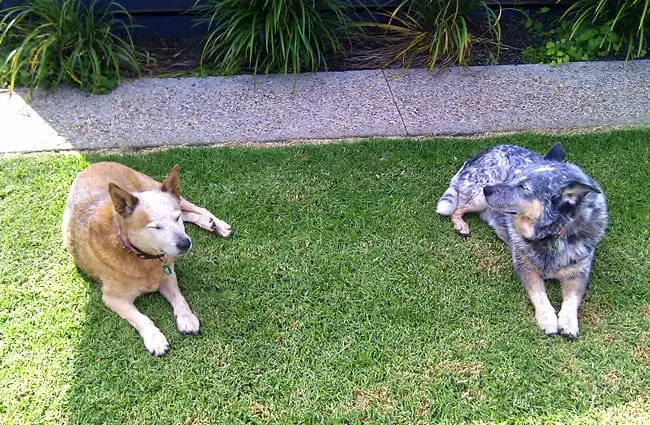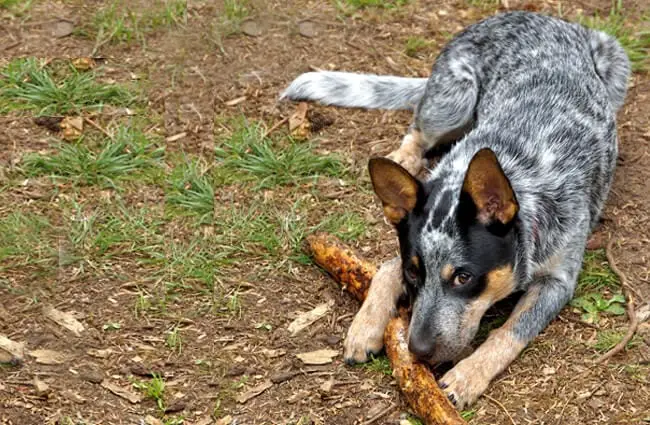The Remarkable Australian Cattle Dog: A Comprehensive Guide
The Australian Cattle Dog, often affectionately called a “Blue Heeler” or “Red Heeler,” is a breed steeped in history and brimming with intelligence. More than just a beautiful dog, it’s a working marvel, a loyal companion, and a personality packed into a muscular frame. This guide delves into every facet of this extraordinary breed, from its origins to its needs, providing prospective owners with the knowledge to determine if this dynamic dog is the right fit for their lifestyle.

A Breed Forged in the Australian Outback
The Australian Cattle Dog’s story begins in the 19th century with the needs of cattle drovers in the rugged Australian landscape. They required a tireless, resilient dog capable of herding cattle over vast distances and in challenging terrain. The foundation stock was primarily the Smithfield Sheepdog, a now-extinct collie type, brought from England. These dogs were then crossed with a variety of other breeds, most notably the dingo.
The dingo cross, while initially controversial, proved invaluable. It introduced qualities of independence, stamina, and the instinctive “heeling” behavior – nipping at the heels of cattle to drive them forward. Over time, carefully selected breeding focused on refining these traits, culminating in the breed we recognize today. The result is a dog uniquely suited to its original purpose, retaining a strong work ethic and an unmatched ability to handle livestock.
Physical Characteristics: Built for Endurance
Australian Cattle Dogs are medium-sized, muscular dogs. A typical male stands between 18 and 20 inches tall at the shoulder and weighs between 35 and 50 pounds. Females are slightly smaller, ranging from 17 to 19 inches and 30 to 40 pounds. Their bodies are compact and agile, reflecting their herding background.
The coat is short, dense, and weatherproof, providing protection from the elements. Colors vary, but the most common are “blue” (a mottled gray‑blue) and “red” (ranging from light red to reddish‑brown). Both colors often feature tan or black markings. A distinctive feature is the often-present “mask” or “points” – darker shading around the face and muzzle. Eyes are typically dark brown and almond‑shaped, conveying an intelligent and alert expression.

Temperament and Behavior: Intelligence and Independence
Australian Cattle Dogs are renowned for their intelligence. They learn quickly, but this intelligence comes paired with a strong independent streak. They aren’t necessarily “eager to please” in the same way a Labrador Retriever might be. Instead, they need to understand why they should perform a task.
These dogs are intensely loyal to their families, but can be reserved with strangers. Early socialization is absolutely crucial to ensure they develop into well‑adjusted adults. They have a natural protective instinct and can be wary of unfamiliar people or animals. A well‑socialized Australian Cattle Dog will be confident and polite, but they will always be vigilant.
Due to their herding background, they may exhibit a tendency to “heel” or nip at heels, especially with children. This behavior isn’t malicious, but a result of their instinctive drive. Consistent training and redirection can help manage this tendency. They also have high energy levels and require plenty of physical and mental stimulation to prevent boredom and destructive behavior.
Caring for Your Australian Cattle Dog
Exercise Needs
Australian Cattle Dogs are not couch potatoes. They require a significant amount of exercise daily. A minimum of one to two hours of vigorous activity is essential. This could include long walks, runs, hikes, fetch, agility training, or other engaging activities.
Without adequate exercise, they can become restless, destructive, and develop behavioral problems. Providing them with a “job” to do, even if it’s just carrying a backpack on walks, can help channel their energy constructively.

Grooming
The Australian Cattle Dog’s short, dense coat requires minimal grooming. Regular brushing, once or twice a week, will help remove loose hair and keep their coat healthy. They shed moderately year‑round, with heavier shedding during seasonal changes. Occasional bathing is sufficient, but avoid over‑bathing, as it can strip their coat of natural oils.
Training and Mental Stimulation
Early socialization and consistent training are paramount. These dogs are intelligent and capable, but they can also be stubborn. Positive reinforcement methods, such as treats and praise, are most effective. They excel in activities that challenge their minds, such as obedience training, agility, herding trials, and puzzle toys.
Health Considerations
Australian Cattle Dogs are generally a healthy breed, but they are prone to certain genetic conditions. These include progressive retinal atrophy (PRA), hip dysplasia, deafness, and autoimmune diseases. Responsible breeders screen their dogs for these conditions before breeding to minimize the risk of passing them on to future generations. Regular veterinary check‑ups are essential for early detection and treatment of any health problems.

Is an Australian Cattle Dog Right for You?
The Australian Cattle Dog is a remarkable breed, but it’s not for everyone. They are best suited for active individuals or families who can provide them with the physical and mental stimulation they need. They thrive in homes with plenty of space to roam and play. A secure fenced yard is essential. They require consistent training and socialization from a young age.
If you’re looking for a loyal, intelligent, and energetic companion who will keep you on your toes, the Australian Cattle Dog might be the perfect match. However, be prepared to commit to providing them with the consistent care, training, and exercise they need to thrive.

Beyond the Basics: Nuances of the Breed
For those deeply considering or already owning an Australian Cattle Dog, understanding certain breed‑specific nuances is invaluable. Their high drive isn’t just about physical energy; it’s a deeply ingrained need to have a purpose. Without a constructive outlet, this can manifest in obsessive behaviors like shadow chasing or relentless barking. Enrichment is therefore paramount, think beyond walks and incorporate scent work, interactive puzzle toys, and even “trick training” sessions.
Furthermore, their independent streak can make recall training challenging. A robust recall isn’t just about obedience; it’s about safety. Focus on high‑value rewards and build a strong bond based on trust. Avoid punishment‑based training, which can damage your relationship and exacerbate their stubbornness.
Finally, be mindful of their potential for resource guarding. While not all Australian Cattle Dogs exhibit this behavior, it is important to be proactive. Introduce new items slowly and supervise interactions with other dogs. Teach them to “leave it” and “trade” to prevent conflicts.
By understanding the complexities of this remarkable breed, you can provide your Australian Cattle Dog with a fulfilling life and enjoy a rewarding companionship for years to come.






![Red Angus Closeup of a beautiful Red Angus cowPhoto by: U.S. Department of Agriculture [pubic domain]https://creativecommons.org/licenses/by/2.0/](https://animals.net/wp-content/uploads/2020/03/Red-Angus-4-100x75.jpg)

